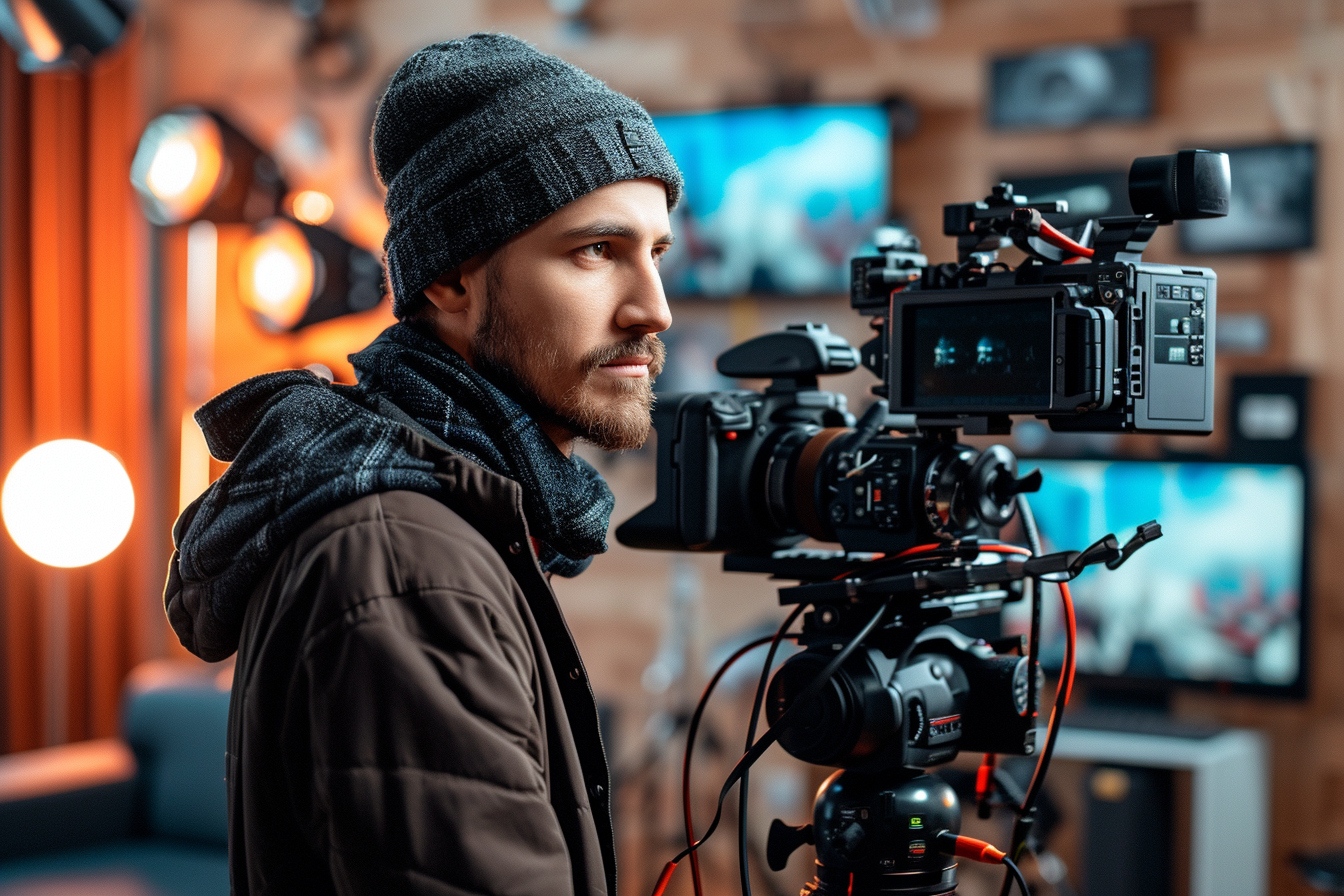Navigating the vast ocean of digital cameras can be overwhelming for content creators. Your choice of vlogging camera can either propel your content to new heights or sap the vitality from your creative endeavors. This comprehensive guide aims to distill the complex decision-making process into manageable considerations that prioritize your needs as a vlogger.
Image quality: a top priority
Resolution and Sensor Size: Undoubtedly, image quality sits at the pinnacle of priorities in selecting a camera. For vloggers, a camera that shoots in 4K affords a future-proofed level of detail and flexibility. However, 1080p remains a workable standard for many. The sensor size critically impacts image quality: larger sensors generally mean better low-light performance and depth of field control, making full-frame or APS-C sensors preferred choices.
Frame Rate: Beyond static image quality, consider the frame rates. Vloggers keen on adding slow-motion effects should seek cameras offering high frame rates like 60fps or 120fps at 1080p.
Sound: capturing the moment
Microphone Input: A camera might deliver stunning video, but poor audio quality can thwart viewer engagement. A built-in microphone rarely suffices; hence, opt for a camera sporting a microphone jack. This allows the use of external microphones for pristine audio capture.
Headphone Jack: Alongside a microphone input, a headphone jack to monitor audio levels in real-time can be essential for ensuring your sound is crisp, clear, and free of issues.
Focus on autofocus
Autofocus System: Robust autofocus ensures you remain the visual anchor in every frame. Cameras with fast and reliable autofocus, featuring face or eye-tracking capabilities, are indispensable for vloggers. This technology maintains focus on the subject, freeing you to concentrate on creating content rather than fiddling with manual settings.
Stabilization: a steady companion
In-body Stabilization or Optical Image Stabilization: Vlogging frequently involves movement, and image stabilization is crucial to avoid shaky footage. Cameras with in-body stabilization (IBIS) provide the freedom to shoot handheld without deterring from the viewing experience. Optical Image Stabilization (OIS) in lenses is also beneficial, especially when the camera lacks IBIS.
Usability: workflow enhancements
Flip Screen: The flip screen is non-negotiable for solo content creators. It allows you to frame your shots accurately while addressing the camera, ensuring you’re always in the picture.
Weight and Size: The ideal vlogging camera is portable. A lightweight, compact design is favorable, as it reduces fatigue and makes the camera inconspicuous, facilitating on-the-go shoots.
User Interface: A camera should enhance your workflow, not hinder it. An intuitive user interface with quick access to frequently used settings can streamline your creative process.
Connectivity: efficiency in transfer
Wi-Fi and Bluetooth: Modern vlogging demands social media readiness. Cameras with built-in Wi-Fi or Bluetooth allow for swift content transfer to mobile devices, enabling speedy uploads to the web.
USB Charging: The ability to charge via USB affords convenience, especially when traveling. Cameras that support USB power delivery enable you to charge your camera with power banks, ensuring you’re always ready to roll.
The power of battery life
The longevity of your camera’s battery could make or break your shooting schedule. Always check the battery life specification, and consider investing in spare batteries. Cameras providing battery life information through percentage display are especially beneficial for managing shoot time.
Compatibility: accessories and lenses
Content creators often develop their visual style through lens choice. Verify the camera’s compatibility with a wide variety of lenses. Additionally, look at the ecosystem of accessories such as tripods, gimbals, and lighting options to ensure a future-proof investment.
Budget: a balancing act
Align your selection with your budget constraints. While it’s tempting to splurge for top-tier features, weigh the cost against your specific needs. Sometimes, a mid-range camera ticks all the right boxes without breaking the bank.
Sample footage and reviews: do your homework
Before making a purchase, study sample footage and seek out reviews by fellow vloggers. This real-world usage advice can reveal strengths and weaknesses that may not be apparent through spec sheets alone.
Brand support and warranty
Investigate the manufacturer’s customer support reputation and the warranty offered with the camera. Strong after-sales support ensures that your camera stays functional through the rigors of daily vlogging.
Embrace versatility

Select a camera that offers versatility. As your vlogging journey evolves, so too will your requirements. Multi-functional cameras, with features such as good low-light performance, time-lapse recording, and strong still photography capabilities, allow you to diversify your content.
An artful compromise
Ultimately, the perfect vlogging camera is an artful compromise tailored to individual style, needs, and aspirations. Prioritize the features that resonate most with your vlogging narrative. And remember, while technology is an enabler, content reigns supreme. Your creativity and commitment to engaging storytelling are integral to the success of your vlogging pursuits.
Elevating your vlogging career begins with selecting the perfect camera—a beacon illuminating your path to content creation mastery. With these essential tips, you’re now equipped to make an informed decision that harmonizes technical prowess with your artistic vision.